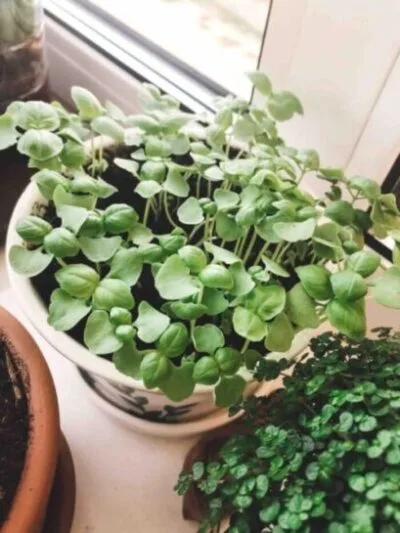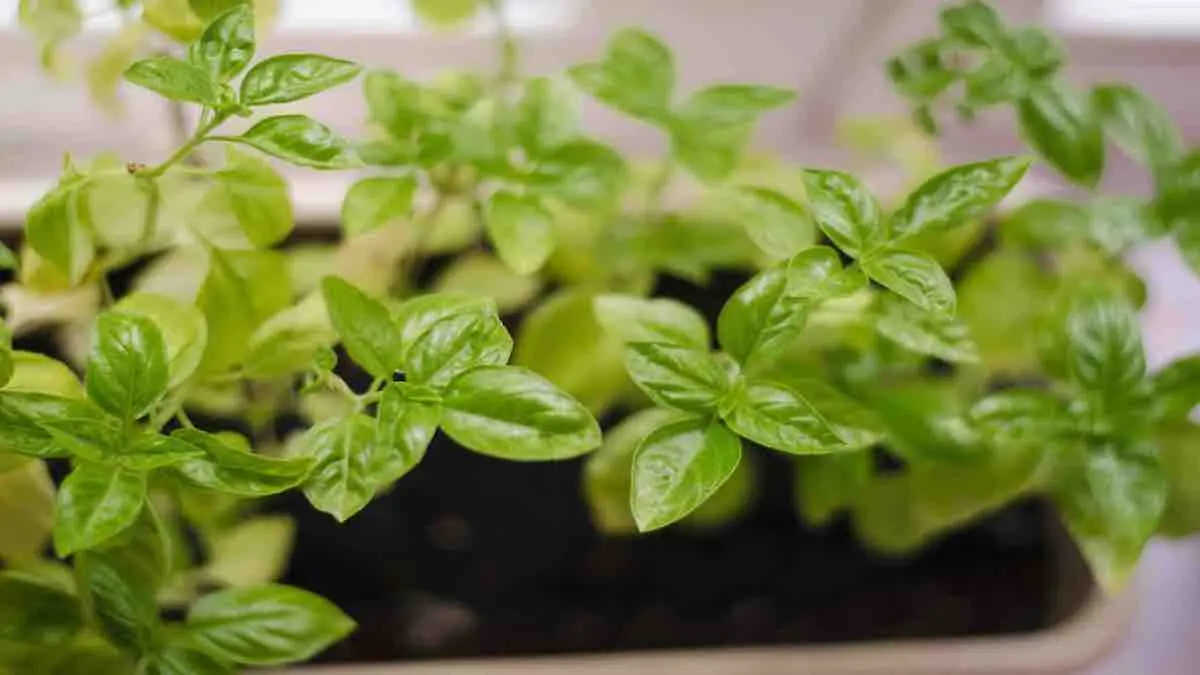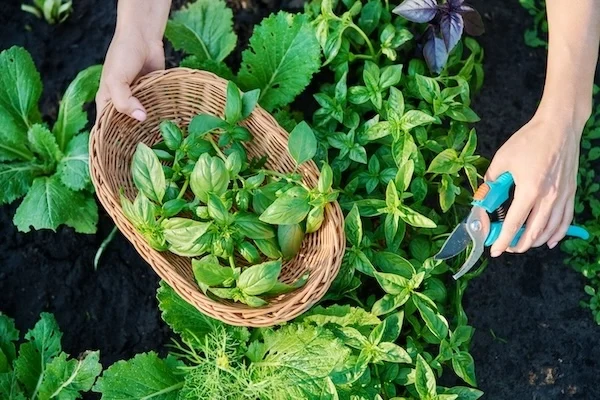Table of contents
Grow Basil at Home
Grow basil at home like a pro! It is nutritious and well worth the effort. This guide will help you grow this wonderful herb in the tropics.
Sweet basil is a very popular herb in Italian cooking. It is best known as the central ingredient in pesto.
Basil is originally native to India, Asia, and Africa. There are more than 60 varieties of basil, each has its own distinct flavour. However, the sweet basils are the most popular of these.
How to Grow Basil at Home
Sweet basil is our favourite and we grow a lot of it during the tropical dry season. However, we find, that sweet basil does struggle during the hot and humid conditions of a tropical summer.
Thai basil is an excellent basil to grow in a tropical summer. It grows well all year round, but comes into its own over summer.
It is fine to put coffee grounds around your basil, but don’t overdo it. If you use it sparingly, the nitrogen in the coffee grounds will give your plant a nice boost.
How to Grow Basil at Home from Seeds
Plant in a loose, organic soil where your basil will get plenty of sunlight.
Time needed: 5 minutes
How do I grow basil at home from seed?
- Sow your seeds:
You can plant all year round in the tropics. Sow your seeds evenly and cover by sprinkling a few millimetres of potting mix or soil over the top of the seeds.
- Thin:
Once your seedlings appear, thin them out so they are 25 to 30cm (10-12in) apart.
- Water:
Water the seedlings around twice a week. This may fluctuate depending on the humidity in your environment. When the top of the soil feels dry, give them water.
- Harvest:
The secret to basil growing is to harvest often. The more you harvest your basil, the more your plant will grow. Also remember that pulling leaves off can damage the vine. Don’t do that. So simply harvest with a pair of scissors.
How to Grow Basil at Home without Seeds
At plant nurseries basil plants are grown densely in small pots, and with a little care, you can encourage these plants to thrive long-term. Most often basil pots contain many seedlings crowded together, which can weaken the plants.
Carefully remove the plant from the container, and gently separate the seedlings. Aim to have 3-4 seedlings per new pot to give each plant enough space.Transfer the separated basil plants into larger containers .
By separating and repotting basil, giving it adequate space, water, and light, you can extend its life and harvest leaves for months. This method allows you to make the most of the store-bought plant and avoid having to buy new basil frequently.
Growing Basil from Supermarket Plant
Growing basil from a supermarket plant is a great way to have a continuous supply of fresh herbs. You can buy potted basil and transplant (as mentioned above) or grow from cuttings of the basil.
How to Grow Basil from Cuttings
Growing basil from cuttings is an effective and straightforward way to propagate this popular herb. Here’s a step-by-step guide on how to successfully grow basil from cuttings:
How to Grow Basil Indoors in Water
- Place the cuttings in a clear glass jar or container filled with fresh water, ensuring that the lower part of the stem is submerged.
- Place the container in a bright, warm location but out of direct sunlight to prevent algae growth in the water. ideally 6-8 hours of sunlight per day. If growing indoors, place the jar near a sunny window or use a grow light to ensure the basil gets enough light.
- Change the water every few days to keep it fresh and prevent stagnation.
- Allow the roots to grow until they are about 1-2 inches long. Once the roots are well-established, you can continue to grow the basil in water. Ensure the water level is consistently high enough to cover the roots.
Growing Basil in Pots
- Select Healthy Cuttings: Choose a healthy basil plant with no signs of disease or pests. Look for stems that are at least 4-6 inches long with several sets of leaves.
- Take the Cuttings: Use clean, sharp scissors or pruning shears to cut a stem just below a node (the point where leaves meet the stem). Each cutting should be about 10cm (4in) long. Remove the lower leaves from the bottom 5cm (2in) of the stem, leaving a few sets of leaves at the top.
- Prepare the Cuttings: Place the cuttings in a small container filled with fresh water, ensuring that the lower part of the stem is submerged. Place the container in a bright, warm location but out of direct sunlight.
- Change the Water: Change the water every few days to keep it fresh and prevent stagnation. After a few days to a week, you should start to see roots forming from the submerged part of the stem.
- Transplant the Cuttings: Once the roots are about 5cm (2in) long, the cuttings are ready to be transplanted into soil. Fill a pot or container with well-draining potting soil. Make a hole in the soil and gently place the cutting, burying the roots and lower part of the stem. Firmly press the soil around the stem to ensure good contact.
- Water and Care: Water the newly planted cuttings thoroughly to settle the soil. Place the pot in a bright location with indirect sunlight initially, gradually moving it to full sun as the plant establishes.
- Maintenance: Keep the soil consistently moist but not waterlogged. Basil prefers regular watering, especially during dry periods Fertilise lightly with a balanced, water-soluble organic fertiliser every few weeks to promote healthy growth.
Basil is a very easy to grow and versatile herb. Indeed it can be grown in pots quite easily. Furthermore you can simply grow it from seed or cutting.
Grow Basil at Home Outdoors
In the tropics it is very easy to grow basil outdoors.
Location and Soil
Plant in full sun, or at least where the plant will get sun for a good part of the day. Also, plant your seeds in well draining soil. Hence loose soil is a good medium for this plant. Here in the tropics we recommend growing basil in pots or a container bed.
Fertilising
If you are growing direct into lovely rich soil, you may not need to fertilise your basil at all. However, if you are growing in a pot or container, fertilise your basil every 4 weeks with a liquid fertiliser.
Watering
Remember that plants will dry out quicker in a container, so be sure to water at least every 7 days.
How to Grow Basil Indoors
Growing basil in water, also known as hydroponic growing, is a convenient and space-saving way to cultivate this aromatic herb. Simply follow the relevant steps mentioned above, but note the below tips below when growing in water:

Pests and Diseases
Insect pests and diseases are more of a problem during the wet season. This is due to the hot humid conditions.
The major pests in the tropics are leaf eating beetles, aphids and caterpillars. However, you can pick these off your plants at home, or if the challenge is bigger you can use an insecticide.
Basil Plant Indoor Benefits
Eating basil is not only enjoyable, it has many health benefits. So there are many healthy reasons to grow basil at home.
Health Benefits
Loaded with vitamins and minerals, basil is good for your health.
Weight Loss
Basil helps to slow down the process of sugar release in the blood. This makes it useful as part of an overall strategy to manage excessive body weight.
Fibre
Basil is high in fibre, especially if you eat the seeds. It also contains eugenol, which has an anti-inflammatory affect on the digestive tract. Consuming basil can be a useful part of an overall strategy to address inflammatory bowel conditions.
Immune System
Holy Basil (Ocimum tenuiflorum) is widely believed to improve immunity when eaten on an empty stomach.
Antioxidants
You should also grow basil at home for its antioxidants such as eugenol, anthocyanins and beta-carotene. These antioxidants help the body fight free radicals in the body, thus reducing cell damage. This can reduce your risk for a variety of conditions, such as cancer, heart disease and arthritis.
Prebiotics
Basil has prebiotic fibre that is good for gut health. The seeds are particularly helpful in this regard.
In conclusion thank you for reading and we encourage you to grow basil at home.
Other Tropical Herbs
- Cilantro
- Dill
- Garlic Chives Growing
- Ginger Growing
- Lemongrass
- Mint
- Stevia
- Thai Chili Plant
- Vietnamese Mint (laksa leaf)



Comments
4 responses to “Grow Basil at Home: Your Guide”
[…] Grow Basil at Home […]
[…] Basil […]
[…] Grow Basil at Home […]
[…] Grow Basil at Home […]